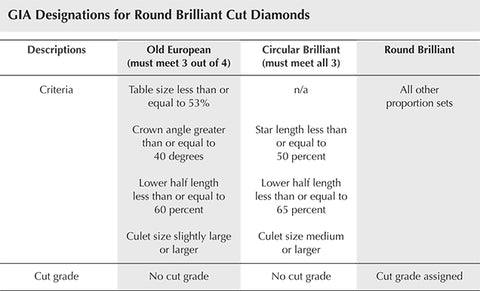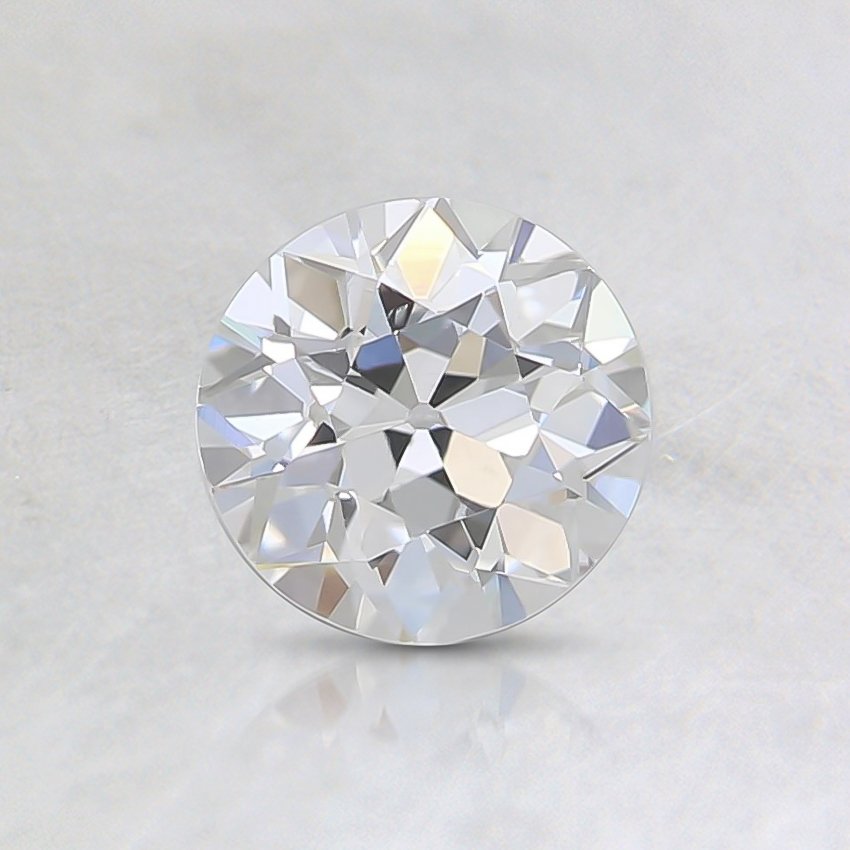If you have been looking at antique cut diamonds you will notice that often times GIA will give the label of Old European Brilliant & Circular Brilliant to stones which look very similar in appearance.
Old Europeans: In our experience the Old European tends to, but is not always a bit deeper than its round brilliant counterpart. This of course is a generalization and there are instances with shallow Old European cuts as well! You will notice a smaller table, high crown angles, and often a steep pavilion angle. This style is typical of the mid 1800s and into the early 1900s as well. Due to the number of variances in cutting styles of Old European cut diamonds, GIA does not apply a CUT GRADE to these stones. We believe its best kept this way, because all loves of antique cut diamonds prefer different makes as their choice.
GIA Criteria for Old European Cuts:
(Diamond must meet 3 of these 4 for the OLD EUROPEAN cut designation)
- Table Size: 53% Or Less
- Crown Angle: 40% Or Greater
- Culet: Slightly Large or Greater
- Lower Half Facet Length: 60% Or Less
Circular Brilliant: We believe this cut to be the bridge between the Old European and todays Modern Brilliant Round. Of course there were many variance along the way and tweaks but this is a generalization. In our experience circular brilliants can look closer to old europeans and the later circular brilliants tend to resemble round brilliants. When we are looking at a GIA report on circular brilliants we make sure to look at all the angles and %'s to get a good idea of how the stone will look if we are not able to physically inspect the stone! Often times you will see these diamonds with tables larger than 53, and sometimes in the low 60's.
GIA Criteria for Circular Brilliant Cuts:
(ALL 3 Must be present for the designation of circular brilliant)
- Lower half length: 65 percent or smaller
- Star Length : 50 percent or smaller
- Culet: medium or larger
We Often See diamonds which are at the cusp of old European and circular brilliant which look the same, but for a small % change in table size or star length get a designation of circular brilliant. It is more important to look at the stone itself and beauty of the fire than to asses based off a report.

Citations & Credit:
https://www.gia.edu/gia-news-research-round-brilliant-cut-diamond-pay

